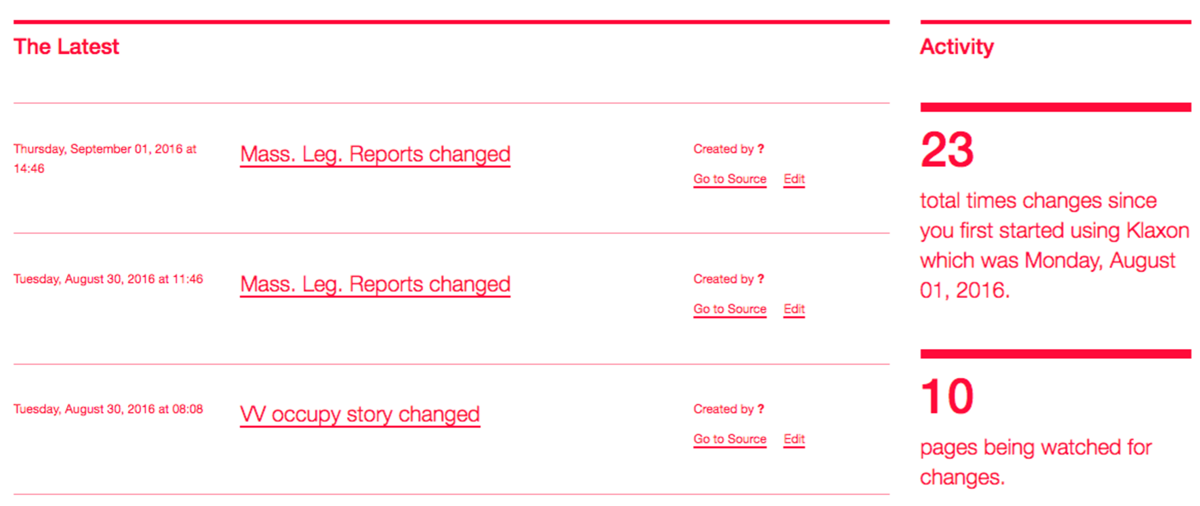Last month, Tom Meagher was on vacation in Prague when he got an email from a tipster. It was important news.
Meagher, the deputy managing editor of The Marshall Project, checked his phone and saw that a Texas court was staying the execution of Rolando Ruiz, a convicted San Antonio hitman. He read the court’s decision, then updated The Marshall Project’s execution database before breakfast. It took him 15 minutes.
“I clicked through, read the decision and verified that it meant what I thought it did,” Meagher said.
The tipster wasn’t a courtroom employee or a lawyer close to the case. It was Klaxon, an application built by Meagher along with Ivar Vong, The Marshall Project’s former director of technology, and Editorial Designer Andy Rossback. The tool, which The Marshall Project open-sourced this week, scans webpages for updates and notifies users when they’re changed, turning the internet into a kind of automated tipline.
The tool has its roots in a reporting problem Meagher faced in 2014, when he was trying to maintain “The Next to Die,” a database that tracks pending executions throughout the United States. He was looking for an easy way to keep up with the execution calendar for the 10 states in the project. So, he turned to Vong for help.
“He went away for a weekend and hacked something together,” Meagher said. “That became the first version of something that became called Klaxon.”

(Screenshot, Klaxon)
Using Klaxon, journalists can flag sections of important websites on their beat. So, for example, a crime reporter can highlight a section of the local police department webpage where officers normally post new data or crime updates. Klaxon would then send that reporter an email — or a Slack message — whenever that website is changed, flagging the differences. It kind of like an early warning system for news.
Klaxon can be used by teams, too. A reporter and editor working on a project can collaborate to find relevant websites and configure the alerts together. It will then send notifications to different people and Slack channels, depending who established the original alert.
Klaxon has come in handy since it was launched at The Marshall Project two years ago, Meagher said. In addition to alerting reporters and editors to important news, it’s also served as an archive for important government webpages, allowing reporters to go backward in time and see when specific records were updated.
Another feature that has yet to appear on the open-source version is a tool that allows journalists to monitor documents for changes, flagging PDFs or spreadsheets when record-keepers make unannounced updates.
For all Klaxon’s usefulness, there are some things it can’t do, Meagher said. Although it can alert reporters to important developments before other people see them, journalists ultimately have to pick up the phone and verify the information.
“It doesn’t often break stories, but it often lets you know about things as they’re breaking,” Meagher said.
Currently, The Marshall Project uses Klaxon to monitor about 30 websites for new developments, including the Department of Defense, the Supreme Court and the Texas Criminal Court of Appeals. It’s automating work that would take The Marshall Project’s small newsroom much longer to tackle, a function it could provide to newsrooms around the world without coding acumen of their own.
Already, journalists at The New York Times, The Texas Tribune and The Associated Press have begun testing it, and Meagher is expecting the user community to grow.
“We can see this as having a broad application for any beat,” Meagher said.
You can download Klaxon here.






